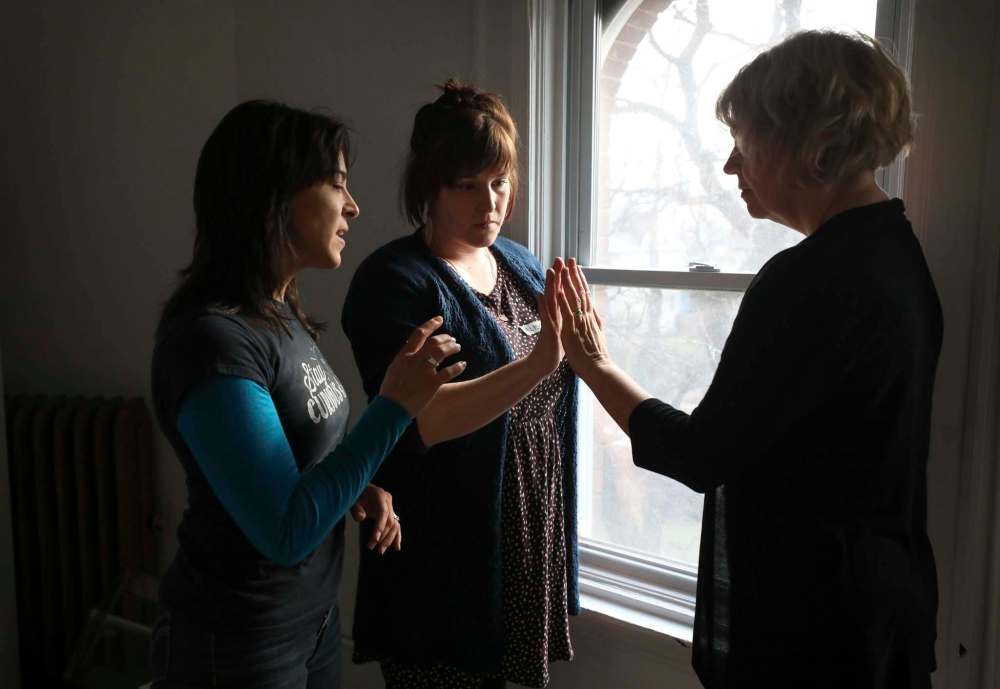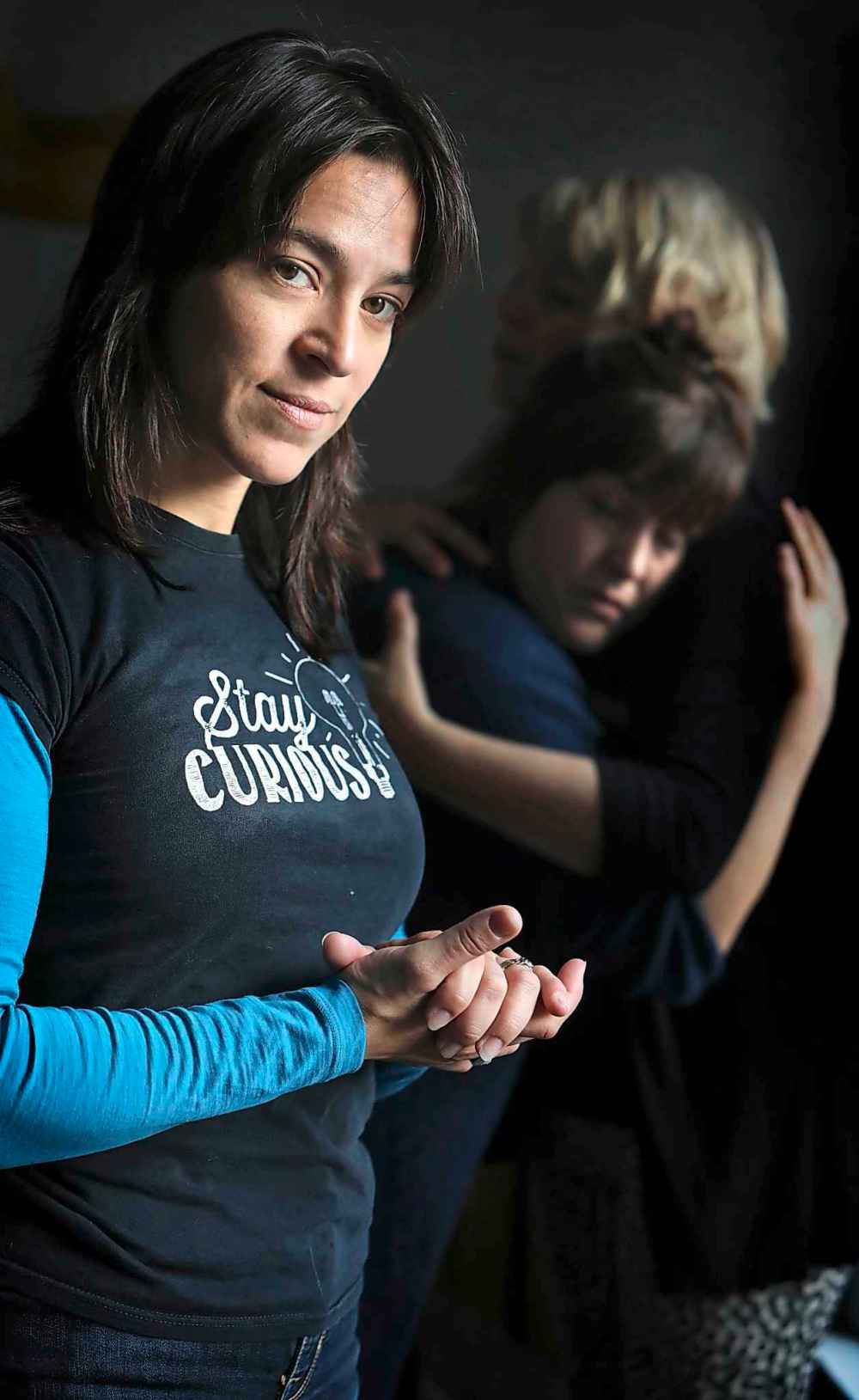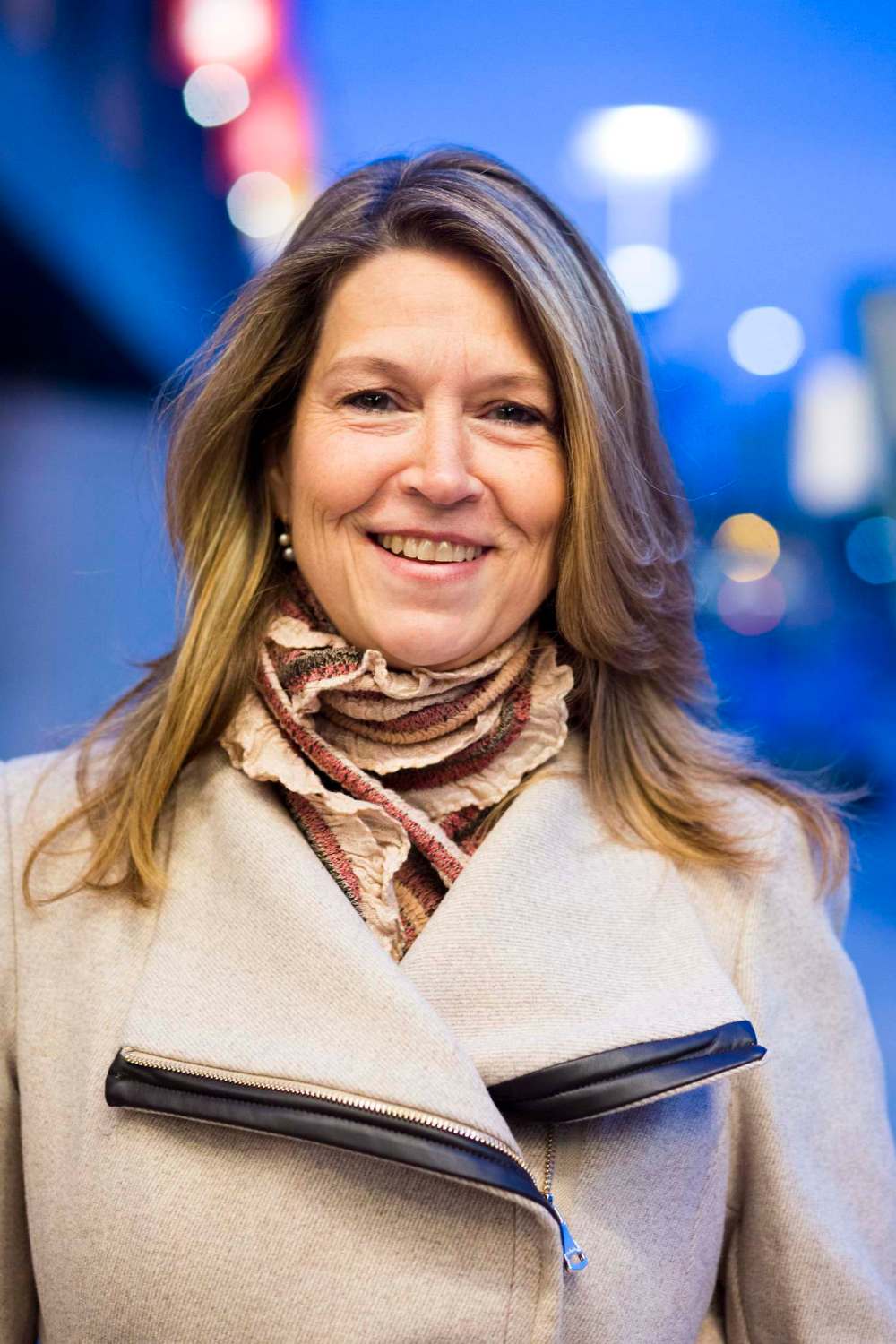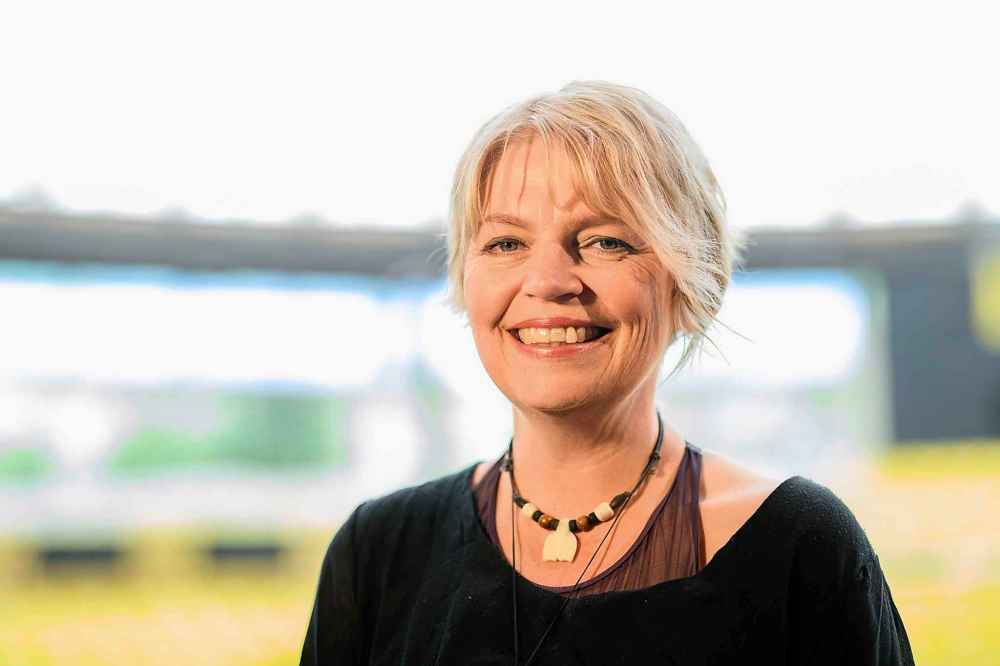Sex it, stage left Theatre, film and TV producers and directors are increasingly — in the age of #MeToo — calling on intimacy experts to work with actors both emotionally and physically so they can fake it, fearlessly
Read this article for free:
or
Already have an account? Log in here »
To continue reading, please subscribe:
Monthly Digital Subscription
$0 for the first 4 weeks*
- Enjoy unlimited reading on winnipegfreepress.com
- Read the E-Edition, our digital replica newspaper
- Access News Break, our award-winning app
- Play interactive puzzles
*No charge for 4 weeks then price increases to the regular rate of $19.00 plus GST every four weeks. Offer available to new and qualified returning subscribers only. Cancel any time.
Monthly Digital Subscription
$4.75/week*
- Enjoy unlimited reading on winnipegfreepress.com
- Read the E-Edition, our digital replica newspaper
- Access News Break, our award-winning app
- Play interactive puzzles
*Billed as $19 plus GST every four weeks. Cancel any time.
To continue reading, please subscribe:
Add Free Press access to your Brandon Sun subscription for only an additional
$1 for the first 4 weeks*
*Your next subscription payment will increase by $1.00 and you will be charged $16.99 plus GST for four weeks. After four weeks, your payment will increase to $23.99 plus GST every four weeks.
Read unlimited articles for free today:
or
Already have an account? Log in here »
Hey there, time traveller!
This article was published 25/10/2019 (2236 days ago), so information in it may no longer be current.
When Alicia Rodis was working as a young actor, she was often typecast.
“I played the Slutty Best Friend very often,” she says with a laugh. “From being 15 and playing a Kit Kat girl in Cabaret, to playing Ado Annie in Oklahoma as a kid growing up, I was often put in situations where I had to exude sexuality and sensuality.”
She did her first nude scene at 18. And she was confident and comfortable with it; she came from a martial arts and dance background, and knew how to tell stories with her body.
But when she started working in fight direction and stunt work in New York City, she realized there was a glaring gap where intimacy was concerned.

“I was really surprised when I would get onto sets but also theatre as well where we’d have a fight scene and everything would be set out ahead of time, and if I was coming in as a day player (someone who is contracted to do a single episode) by the stunt coordinator, I had someone telling me, this is the high fall you’re doing, this is how many feet it is, giving me all the information making sure I had the agency necessary to keep myself safe, and someone was in my corner,” she says.
“And then I would go in to do any piece of intimacy and nudity on set or in a show, and it was just rarely even spoken about and I would get so little information.”
Toronto actor/fighter/singer/dancer Siobhan Richardson had a similar epiphany years ago when she was in a role that required a stage kiss. She had done stage kisses before, but she realized that she’d had little to no direction.
“I sort of looked up at my scene partner and, in my head I’m thinking, ‘I don’t have a process for this,’” she says. “We have a process for, ‘How do I punch somebody?’ We have a process for all the other things we do in rehearsal, but not for kissing someone.”
Fight directors keep actors safe when they have to throw punches or do a body slam. But who keeps them safe when they have to kiss someone, or simulate sex, or do a nude scene or a scene of sexual violence? After all, that’s also vulnerable, sensitive work that demands the same level of care and artistry, and carries with it the potential for physical and emotional harm.
Separately, Rodis and Richardson began working with Tonia Sina, a Chicago-based actor/fight director/movement teacher who created her landmark Intimacy for the Stage method as part of her thesis for her master of fine arts degree in movement pedagogy at Virginia Commonwealth University back in 2004.
Together, in 2015, Sina, Richardson and Rodis founded Intimacy Directors International, a not-for-profit organization that has set the blueprint for best intimacy practices on set and in the rehearsal hall, and trains and certifies highly skilled and specialized professionals called intimacy directors — people who could do for intimacy what fight directors and stunt co-ordinators do for violence.
Intimacy directors — and co-ordinators — choreograph scenes of intimacy and intimate violence, but they are also advocates: they are responsible for the emotional and physical safety of actors and anyone else in the rehearsal hall or on set. (Intimacy directors work in live performance while intimacy co-ordinators work in TV and film.)
Four years ago, these three women were pioneers in a field few outside the industry had ever heard of. And then, #MeToo happened.
In October 2017, the New York Times published a damning story detailing the sexual misconduct allegations against mogul film producer Harvey Weinstein.
The whisper networks about predators and abusers — Weinstein, and a crushingly long list of others — whose power and influence kept them safe for too long became shouts, as more and more women began telling their stories about harassment and abuse, particularly in their workplaces. Me too, me too, me too. A hashtag movement that had been started a decade prior by activist Tarana Burke went viral, and then it went nuclear. Institutions were shaken off their foundations; pedestals crumbled. “This is the way things have always been” was no longer acceptable. The landscape was changing, and fast.
When the problem was named and people were fired or formally charged, the question became “how can we do better?” The dramatic rise in the profile of — and demand for — intimacy directors and co-ordinators is arguably one of the most constructive and measureable outcomes of the #MeToo movement. Sets and rehearsal halls are workplaces, and the safety of actors at work became a real priority for productions.
#MeToo was dealt with head-on in art itself; it’s difficult to think of a TV show that didn’t have a #MeToo storyline or episode in the last two years. But the industry also had to grapple with how sex scenes were done in the #MeToo era, and how to safeguard actors against misconduct. For some, that meant hiring intimacy co-ordinators and directors.

Rodis was hired to work as an intimacy co-ordinator on the second season of HBO’s The Deuce, which takes a gritty view of sex-trade industry in 1970s New York City. Last October, the network announced it would use intimacy co-ordinators on all of its shows that include scenes of intimacy. Rodis is now overseeing the training of intimacy co-ordinators to fulfil that mandate.
“One thing that’s really incredible about this opportunity with HBO is that its helped set a precedent for so many other productions outside of HBO as far as protocols and giving that piece of mind and outside eye to assist in the entire structure of how we’re handling these scenes,” Rodis says.
Netflix has used intimacy co-ordinators on GLOW and Sex Education; Showtime has used them on The Affair. That’s just a handful.
“It’s a very exciting time to see real, systematic change,” Rodis says.

An intimacy co-ordinator is born
Sharon Bajer was in the audience for a performance of Bakkhai at the Stratford Festival in Ontario. Anne Carson’s translation of the ancient Greek tragedy The Bacchae features “explicit scenes of erotica” — including simulated orgasm and masturbation — per the pre-performance warning.
Bajer, a veteran Winnipeg actor, playwright and director who performs regularly on just about every stage in the city, was struck by the production’s sex scenes. “They were done so beautifully,” she says.
Bajer found out that the show’s director, Jillian Keiley, had hired Sina as an intimacy director. “Everyone was asking: what is an intimacy director?” she recalls.

It was the summer of 2017. #MeToo was a couple months away from trending on Twitter. But people’s interest in intimacy direction was piqued, and coverage of Keiley’s show marked the first time the concept made it into the pages of the New York Times.
For Bajer, intimacy direction represented a new artistic avenue. She applied to do a 10-day intensive put on by Intimacy Directors International two summers ago in Illinois, and is now an official apprentice with IDI. She’d eventually like to work as an intimacy co-ordinator in the film industry in Manitoba and is hoping to raise awareness about intimacy co-ordination locally. In fact, Richardson is flying to Winnipeg to join Bajer for a series of workshops this weekend.
In all her years as an actor, Bajer had never encountered an intimacy director or co-ordinator. She wishes she had.
“There was a film I did about 15 years ago and there was some nudity, and the other actor wasn’t particularly nice to me,” she recalls. “If I had had an intimacy co-ordinator there, I think it would have really helped. Often you go to the hair and makeup people because they’re usually women and they’re the people you talk to the most, but it’s not really their job.
“And yeah, I can think of many times in theatre situations where the director didn’t feel comfortable with the intimacy onstage and there were times — and again this is 10, 15 years ago — where they would say, ‘Why don’t you two go off into a rehearsal room and figure this out?’” Bajer says.

“That’s not making art,” Richardson points out. “That’s asking people to play Seven Minutes in Heaven and show you what they did.”
Intimacy work is not about the sanitization of sex scenes or the complex, human stories they help tell. It’s about safety. And when people feel safe and empowered, Rodis says, they are better able to deliver bold performances.
“When people come to work and they know for certain they are not going to be harassed or abused, they find they can throw themselves into very intense work,” she says. “I am not an advocate for censorship in any way. I want us to tell daring and brave stories and to go as far as everyone wants to go — as long as we know we’re going that far and everyone is safe about it.”
Making better sex scenes
Intimacy work is about giving precise, choreographed, agreed-upon physical language to a stage direction that can often be as vague as “they made out passionately.”
“I’m always looking for input from the director, from the actors — what is their interpretation of the scene?” Richardson says.

“I see my role as a translator. I hear from directors and actors what they want to see in the scene, and then I help to translate that into a physicality. So we might set up a beginning piece of movement, and then we’ll rehearse it and do what I call ‘physical dramaturgy’ on it, where we continue to refine that movement until everybody’s satisfied with how we’re telling that story physically and that they’re within the boundaries that we’ve set.”
Richardson includes the actors in this process so that she’s not, as she puts it, offering up choreography that’s not sustainable, and the actors have an opportunity to let her know if there are specific actions or movements that are no-gos. Consent is critical.
“You would do the same thing in a fight scene,” she says. “You would tell me if you had a knee injury that we need to be mindful of. Or, ‘I can’t have my hair pulled.’ OK, great. So we can do the same thing with intimacy. For some people, they worry that that’s going to somehow hamper the process, but really what I’ve found universally is that it helps the process go more smoothly.
“I really do welcome their ‘no.’ I welcome their, ‘That’s not available — what’s the image we’re looking to do here?’ They can make a new offer, I can make a new offer. It’s really important to me that my actors are fully free to say, ‘No, that’s not sustainable, I won’t be able to do that more than once, or the run of the show.’”
On film sets, the process is a bit different: Rodis points of that, like stunt work, “we only have to do it a certain amount of times, we can cheat a lot of things, we can use angles, we can use a lot of different tools to get a successful shot for something.”
And unlike in nightly performance runs of theatre, an intimate scene in a film is done a bunch of times in a short — thereby less expensive — amount of time (”hopefully,” Rodis says with a laugh), and then it’s done.
Speaking up and saying no — and have that no be welcomed and respected — to people in positions of power can be hard for actors, especially if they are young or green. And power imbalances don’t just exist between director and actor, or producer and actor. They also exist among actors. Having to do your very first love scene with a famous actor you’ve been watching on TV for 20 years, for example, can be intimidating.
“You’re kind of powerless as the performer. We’re contract workers. We’re hired on a show-to-show or film-to-film basis, and I think people have been afraid of being a troublemaker, or you feel pressured. No one should ever feel pressured into something at the last minute when you’ve got 100 people around you and the cameras are going.” – Sharon Bajer
“You’re kind of powerless as the performer,” Bajer says. “We’re contract workers. We’re hired on a show-to-show or film-to-film basis, and I think people have been afraid of being a troublemaker, or you feel pressured. No one should ever feel pressured into something at the last minute when you’ve got 100 people around you and the cameras are going. You always want to know what you’re about to do, and agree to those things ahead of time. I think, before, people felt like they had to do certain things in order to keep their jobs. You think about young people, and it may be their first film. And they don’t really know what they can or cannot ask for. If you have the intimacy co-ordinator there, they can guide them through the process.”
Indeed, having an outside expert with specific, specialized skills can also help balance the power in a room.
“No one person, then, is expected to have all the knowledge,” Richardson says. “I’m also not the director, I’m not doing the hiring, so that tends to lessen the, ‘I’m not sure if I can talk to you about this because I don’t want to seem difficult, or like I’m not a good actor.’”
Bajer points out that intimacy experts not only advocate on behalf of actors, they also protect producers and the director, as well. “If you have someone on set who is making sure that the actors feel safe and the things they’re doing are consensual, that the protocols laid out by our association are upheld — so if there’s nudity in a scene you’re supposed to have a closed set, for example. You’re not supposed to have everyone gathered around a monitor watching. Having barriers in place so that the sex is really simulated. Alicia Rodis and (intimacy co-ordinator/director) Claire Warden have really developed specific barriers and ways of making people look like they’re actually naked and having sex when they’re fully not.”“Alicia Rodis and (intimacy co-ordinator/director) Claire Warden have really developed specific barriers and ways of making people look like they’re actually naked and having sex when they’re fully not.” – Sharon Bajer
Having that kind of oversight can go a long way in mitigating the harm that can happen on set when those protocols are not followed — which can happen even on sets for shows that, outwardly, seem progressive. In March, Showtime pulled the plug on the acclaimed feminist comedy SMILF amid an investigation into the conduct of showrunner and writer Frankie Shaw, who also stars in the show as a single mom navigating poverty and trauma. Shaw was accused of inappropriately handling sex scenes, and is alleged to have pressured an actor with a no-nudity clause into doing a nude scene.
“This is there to empower everyone, not just actors,” Rodis says.
Going all the way
What about when the sex in a scene is not simulated? As Kate Sinclaire will tell you, there’s a place for intimacy co-ordination in pornography.
Sinclaire is a Winnipeg-based adult filmmaker and the founder of CinéSinclaire and Cherrystems, two sex-positive feminist porn companies. Conversations about boundaries, consent, and the creation of safer sets are absolutely crucial when it comes to making ethical pornography.
“From working in porn, there are so many people with such horror stories of showing up and working in sets that are not ethically run or run in a way that will keep performers safe. I’ve been working in the porn world against that mentality, speaking at conferences related to sex and porn,” she says.
“People have always been taken advantage of on sets, especially women, unfortunately. Now with the #MeToo movement and actual public discourse and a big thing I think is performers in porn having social media so they can actually speak for themselves. It sounds like it’s becoming more of a problem but I think it’s becoming less of a problem because we’re talking about it.”

Sinclaire been branching outside of the adult film world, too, leading safer sets workshops for the Winnipeg Film Group. She is also interested in pursuing intimacy co-ordination certification with IDI.
She points out that film sets, adult and otherwise, are fast-paced environments that don’t necessarily allow for a lot of time to take care of the real people (with real feelings and past trauma) who might feel pressured to say yes when they might otherwise would have said no.
“I go in with lots of time and adequate budget knowing I might get something shorter out of it, but I know that on bigger sets, you talk about bigger budgets, bigger time constraints, bigger crews, and you have to move at a reasonably quick pace — there isn’t necessarily time for a director to be as chill as my sets are. An intimacy co-ordinator on those sets can help empower actors who are maybe spooked to say to the director, ‘I’m not comfortable with that.’”
Although the sex scenes Rodis works on are simulated, she says it’s phenomenal that the idea of intimacy co-ordination is resonating in the realm of adult film and entertainment.
“I think advocacy belongs pretty much everywhere, and especially when it comes to stories of sexuality and gender and regardless of what capacity they’re being told,” Rodis says. “I definitely draw a line in what I’m doing for (the Screen Actors Guild and the American Federation of Television and Radio Artists unions) and certain union film and television. However, I am over the moon that this would inspire people who work in pornography, sex work, etc.”
Playboy is now using intimacy co-ordinators on photo-shoot sets, too.
Whose job is it, anyway?
Thomas Morgan Jones, the artistic director at Prairie Theatre Exchange believes that creating a safe, creative environment that allows “artists to take risks artistically without risking anything personally in terms of their safety” requires a full strategy that includes intimacy direction, but does not begin and end with it.
“What stands out as important to me is the employment of, awareness of, and the invention of the position of an intimacy director is a response to the time we’re living in,” Jones says. “As an artistic director, how do we keep our spaces, our not-for-profit arts organization theatre spaces, inclusive, safe, respectful and also operating at the highest standard of excellence we can manage? Intimacy direction has become a big part of that conversation. But it’s only one part of the conversation. The other part is how, from the top-down, organizations value these things in all aspects of their operation.”
That might look like policy; PTE has a new anti-harassment policy and is a participant in Not in Our Space, a respectful workplace campaign organized by the Canadian Actors’ Equity Association and the Professional Association of Canadian Theatres.
Or it may look like hiring directors who share those values. “So that it isn’t, ‘We’ll be really safe and attentive in this moment of intimacy,’ but what about in this moment of emotional violence that’s language based but doesn’t include physical interaction? That moment also needs awareness.”“As an artistic director, how do we keep our spaces, our not-for-profit arts organization theatre spaces, inclusive, safe, respectful and also operating at the highest standard of excellence we can manage?” – Thomas Morgan Jones
Some directors, such as Bajer, are getting formal intimacy training. Audrey Dwyer is the associate artistic director at Royal Manitoba Theatre Centre, and she’s also a director and actor who has done intimacy training with IDI.
“For me, safety in the room and creativity in the room is really important,” says Dwyer who, as a director, doesn’t shy away from staging difficult work that deals with assault, trauma and lived experience.
“It was imperative for me to find a way to make sure the person telling their personal story felt grounded, empowered, and safe.”
Dwyer has noticed that there are far more thorough conversations about consent and power in the rehearsal room.
“Those are things that haven’t been discussed in the past in such an overt way, if at all,” she says.

Her colleague, RMTC artistic director Kelly Thornton agrees.
“I look back now, and the world we’re living in now, and we’re so much more aware, since #MeToo, of so many issues in the rehearsal hall,” Thornton says. “I saw things happen in rooms, particularly when I was an assistant director, where people were not taken care of.”
Thornton recalls a show she was part of in which an actor had to do a bit of nudity and, because nudity didn’t make the director uncomfortable or anxious, the fact that it might make an actor uncomfortable or anxious wasn’t even on the director’s radar. There was no ill will, Thornton says, but there were blind spots.
“That person had to take care of themselves and process something themselves,” she says. “It would have been easily avoided in this day and age.”
To that end, Thornton believes that the formalization of intimacy direction in the industry keeps everyone in check, and helps return agency to the actor.
“The sense of an actor being powerless and at the whim of whatever the director wants, I think with this change in the industry, everything has changed about the status of the actor in a room,” she says.
“I think people are given a position and an official support network behind them, with intimacy direction being part of the industry now, that they didn’t have before.”
Big Os worth standing Os

It’s not just cast and crew who benefit from intimacy work, as Bajer, who was so moved by the scenes in Bakkhai, can tell you.
“If you choreograph it well, it’s going to be great every night,” she says. “And the audience, then, feels taken care of, too. A well-choreographed intimacy scene, you can tell that it’s choreographed, you know? It just puts everybody at ease. If you feel endangered or the actor is in danger, it’s not the right kind of feeling you want. We all know that we’re coming to see something that’s false, and we want to be able to not worry about the real actor and really engage with what’s going on with the characters.”
Dwyer, too, is keenly aware of the responsibility a director has to the audience.
“It’s a big responsibility because an audience is coming in with a lot of trust and faith that an experience will look a certain way. When you’re directing something that has intimate moments, for the director, it’s really important to go, ‘What is the audience seeing? Where are they seeing it? How are they seeing it? It’s pretty important to understand the difference between storytelling and shock, and what shock can do for an audience and when it’s not connected to the story.”
Like Rodis, Richardson believes intimacy direction makes for stronger art.
“Absolutely it does,” Richardson says. “We’re relying on more than just, ‘How do we feel about each other today?’ Or, ‘Let’s improv and see what happens?’ For a lot of people, performing intimacy has been a bit of a terrible experience because they’re never sure what to do.
“It absolutely makes for better art because we’re actually talking about it. We’re actually crafting it together and the audience is getting a consistent story.”
jen.zoratti@freepress.mb.ca
Twitter: @JenZoratti

Jen Zoratti is a Winnipeg Free Press columnist and author of the newsletter, NEXT, a weekly look towards a post-pandemic future.
Our newsroom depends on a growing audience of readers to power our journalism. If you are not a paid reader, please consider becoming a subscriber.
Our newsroom depends on its audience of readers to power our journalism. Thank you for your support.











